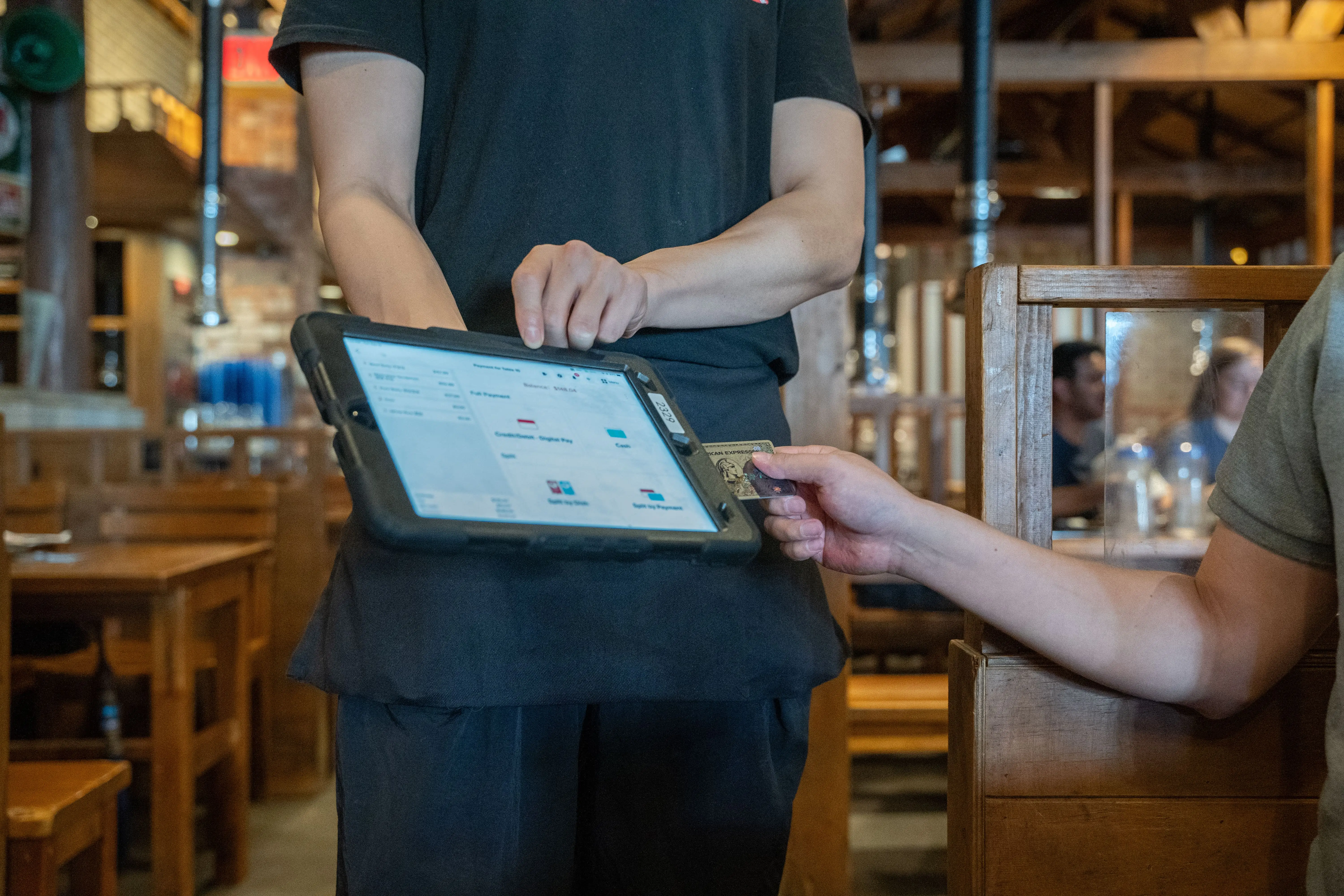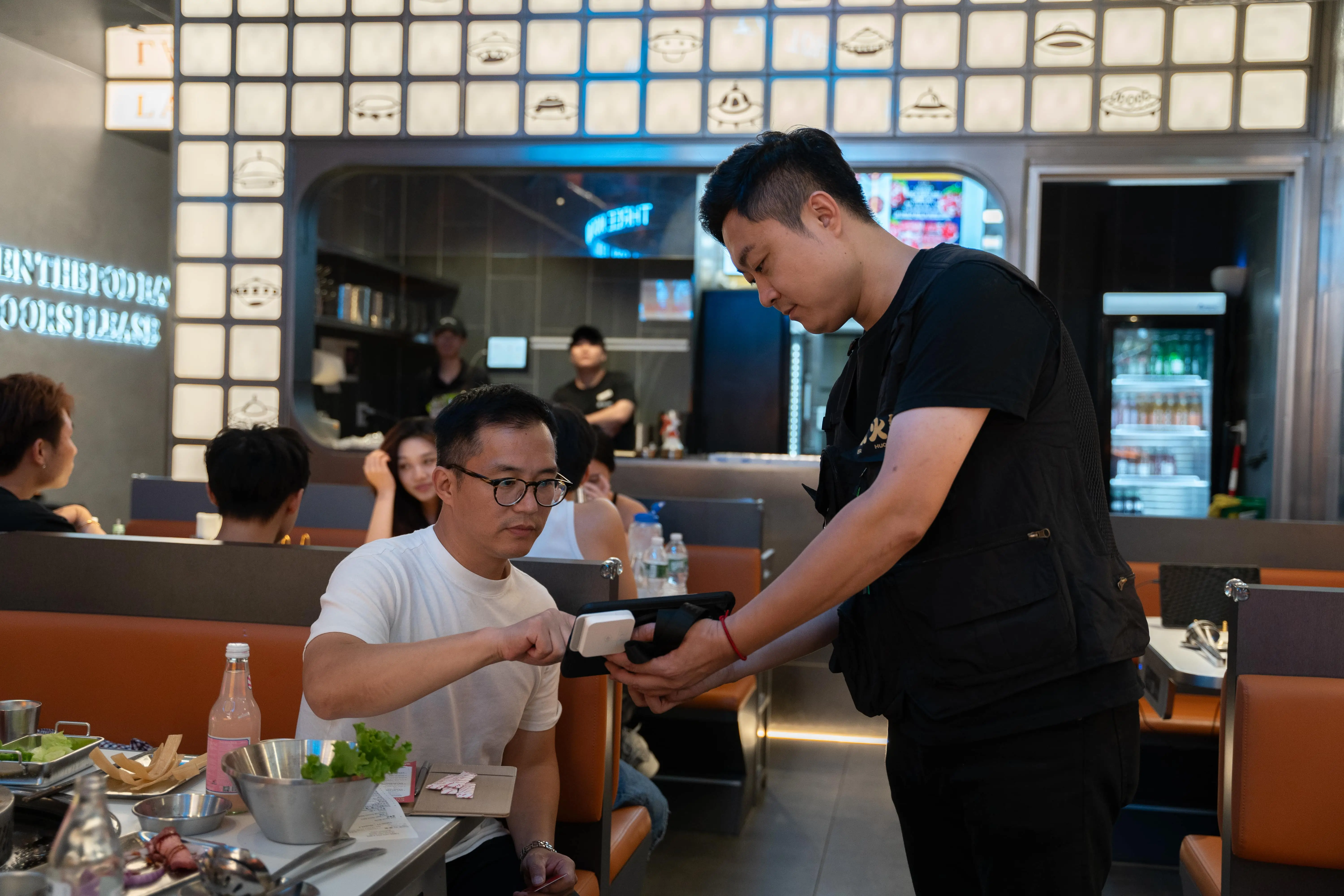
Has the slow pace of traditional payment methods ever frustrated you during a busy shift? If you’re looking to streamline your operations and enhance customer satisfaction, pay at table technology might be the solution you need. This article will guide you through everything from the basic mechanics of this technology to its numerous benefits and potential drawbacks, ensuring you have all the information to make an informed decision for your restaurant.

Pay at table technology refers to systems that allow restaurant customers to pay their bills directly at the table using digital devices such as handheld POS systems or through QR code scanning on their mobile phones. These systems are designed to make the payment process more efficient, secure, and customer-friendly, reducing wait times and enhancing the dining experience.
In the traditional dining setup of many U.S. restaurants, the process of paying with a credit card follows a set sequence that can become inefficient, particularly during busy periods. Here’s a detailed breakdown of each step:
This conventional method is not only time-consuming but also increases the chances of errors and fraud since the credit card leaves the customer’s sight. Additionally, during peak dining hours, the process can lead to significant delays and a bottleneck at the POS station, as servers queue to process payments. This inefficiency can affect the overall dining experience, customer turnover, and ultimately, the restaurant’s revenue.
To address these challenges, pay-at-the-table technology offers a modern solution.

Pay at the table technology simplifies and accelerates the payment process by allowing customers to pay directly from their table. Here's how it works with two main methods: Handheld POS systems and QR codes.
Let's explore the seamless experience of using a handheld POS system for pay-at-the-table transactions, ensuring a smooth and efficient dining process for both your staff and customers.
Using a handheld POS system effectively eliminates the back-and-forth, reduces wait times, and provides a modern, efficient dining experience. This technology not only impresses customers but also helps your staff manage their tasks more effectively.
QR code technology has streamlined the dining experience, making it quicker and more interactive. Here's how it simplifies the payment process at your restaurant, step by step:
Using QR codes not only enhances customer autonomy but also facilitates a faster, more efficient service, allowing your staff to focus on delivering a great dining experience.

Here are the potential drawbacks of Pay at Table technology for restaurants:
Overall, while pay-at-the-table technology offers numerous benefits, it's important to consider these potential drawbacks and prepare for a transition period as your customers and staff adjust to the new system.
Adopting pay-at-the-table technology can bring a range of advantages to your restaurant. Here’s a closer look at the key benefits:
1. Improve Table Turn Times
By enabling faster payment processing directly at the table, you can significantly reduce the time each customer occupies a table. This means you can serve more customers during peak hours, boosting your overall revenue without needing additional space.
2. Higher Tips
With intuitive interfaces, pay at the table devices often prompt customers to tip at standard percentages, which can subtly encourage higher tipping. Servers love this feature as it directly benefits their earnings, and a happy staff often translates to better service.
This technology automates several tasks that would typically require manual intervention, allowing you to manage peak times with fewer staff. This can lead to significant savings on labor costs, especially during busy periods.
4. Easy Expense Tracking
Integrated with your Point of Sale (POS) system, pay at the table technology helps track every transaction in real-time. This integration simplifies bookkeeping, making it easier to monitor sales trends and manage finances.
5. Say Goodbye to Receipt Paper
Digital receipts are a win-win for the environment and your budget. By sending receipts via email or SMS, you cut down on paper use and the costs associated with buying rolls of receipt paper.
6. Added Convenience
Customers appreciate the ease of completing their transactions right at the table without the need to wait for a server to return with their card or change. This convenience often enhances their dining experience and satisfaction.
7. Faster Service
Eliminating the back-and-forth of traditional payment methods speeds up service significantly. Whether it's through faster checkouts or contactless options like QR codes, your service becomes quicker and more efficient, allowing guests to enjoy their meal without unnecessary delays.
8. More Secure Payments
With transactions processed directly at the table, the risk of credit card fraud decreases as the card stays in the customer's hand throughout. This not only protects your customers but also reduces your liability in cases of payment fraud.
9. Fewer Chargebacks
By improving the accuracy of transactions and keeping detailed digital records, pay at the table technology helps reduce the occurrences of chargebacks. This is crucial for maintaining a healthy cash flow and avoiding the administrative hassle of disputed charges.
10. Better Customer Service
Streamlined payments mean your staff can spend more time interacting with guests and less time managing transactions. This shift can significantly enhance the overall customer experience, making each interaction more personal and engaging.
11. Free Up Staff for Other Tasks
With payment processes handled more efficiently, your staff can redirect their focus towards providing better service, up-selling, or managing other critical areas of your restaurant operations. This efficiency allows for a more dynamic allocation of resources, especially during peak times.
12. Time-Saving
Every minute saved is a minute earned in the restaurant business. By speeding up the payment process, you not only improve the customer experience but also optimize your operations, allowing you to handle the ebb and flow of business more effectively.
By leveraging pay at the table technology, your restaurant can not only enhance operational efficiency but also create a more secure and enjoyable dining experience for your customers. This investment not only pays off in the short term by improving daily operations but also builds a foundation for long-term customer loyalty and financial health.
Pay at table technology is a valuable addition to modern restaurants, offering numerous benefits such as improved security, faster service, and increased operational efficiency. While there are some potential drawbacks to consider, the advantages often outweigh the initial investment and adaptation challenges. By integrating pay at table solutions like Chowbus POS into your restaurant, you can enhance customer satisfaction and streamline your operations.
Running a restaurant is challenging, but Chowbus is here to help. Our Handheld POS and QR Code Ordering systems are designed to streamline your operations, reduce costs, and boost revenue. By integrating all our tools into one seamless system, we save you time and money, allowing you to focus on delivering a great dining experience.
Discover how Chowbus can transform your restaurant. Book a Free Demo/Consultation today and experience the benefits of our one-stop ordering and payment solutions!

Explore our FAQ section to find answers to your most pressing questions about Pay at the Table technology. Here, you can learn about various payment methods and how they enhance the dining experience at your restaurant.
Order and pay at the table is a digital service that allows restaurant guests to use a digital device, such as a smartphone or tablet, often via a QR code, to view the menu, place orders, and pay their bills directly from their table. This system eliminates the need to interact with a server and streamlines the dining experience by enhancing convenience and efficiency for both customers and staff.
The pay at the table solution is a payment system that allows restaurant guests to settle their bills directly at their tables. This approach utilizes mobile or wireless point-of-sale (POS) devices that servers bring to diners, enabling them to swipe, tap, or insert their credit or debit cards without leaving their seats. This method not only streamlines the payment process, enhancing customer experience by reducing wait times but also increases table turnover rates, boosting restaurant efficiency. Additionally, it offers increased security as the payment card never leaves the customer's sight, minimizing the risk of fraud.
Pay-at-table technology lets restaurant guests pay their bills directly from their tables. This enhances the customer experience and boosts operational efficiency by eliminating the need to wait for a server or approach a checkout counter.
To pay with your phone in a restaurant, open your mobile payment app and select your payment method, which can include debit, credit, gift cards, WeChat Pay, Apple Pay, and more. Hold your phone near the restaurant's payment terminal, and authenticate the transaction using your passcode, fingerprint, or face ID. Once the payment is confirmed, you're all set!
Typically, when paying with a card at a restaurant, the server brings your bill at the end of the meal. You provide your debit or credit card, which they take to a point-of-sale (POS) terminal. The server swipes, inserts, or taps your card on the terminal to process the payment. Once approved, you receive a receipt to sign if using a credit card, and you have the option to add a tip. Finally, the server returns your card along with the receipt copies, completing the transaction.
